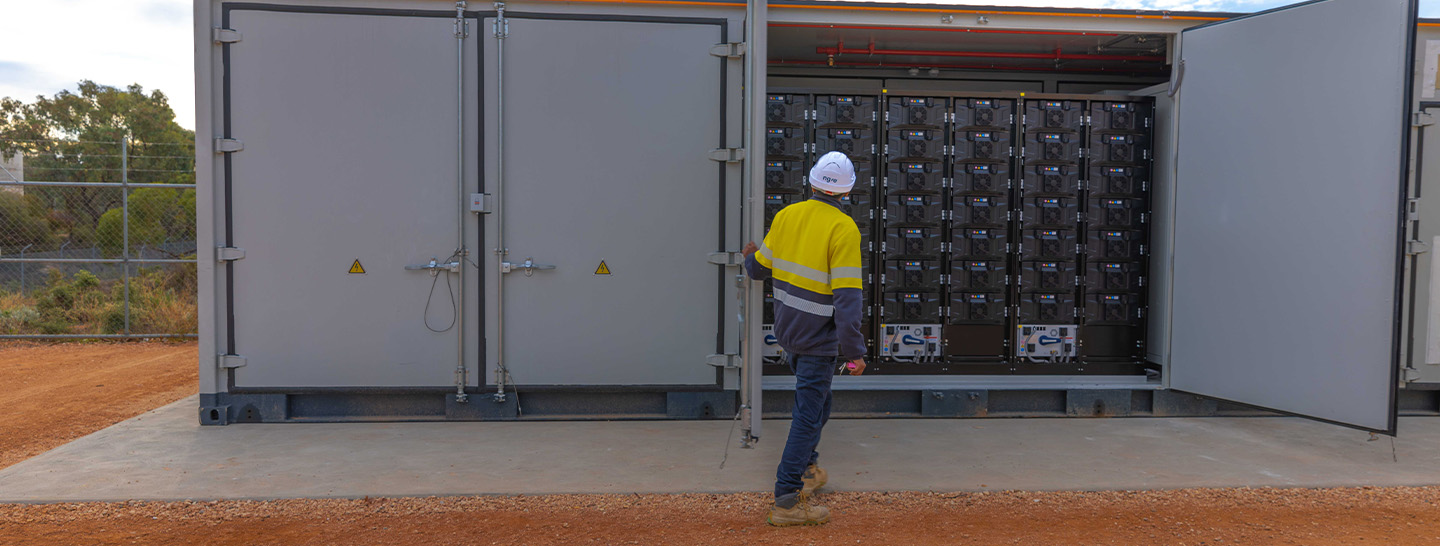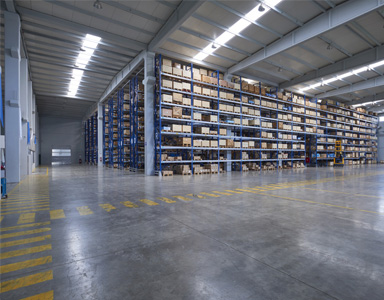
Location
Riverland Region, South Australia
Challenge
Reduce electricity bills including peak demand charges
Solution
Fully financed battery energy storage system with DER.OS optimisation software
Financial Benefit
Energy savings through lower demand charges and participation in demand response programs
The customer

The challenge:
Reducing electricity costs
CIT’s 13 large water pumping stations are energy-intensive, and recently the Trust has found electricity to be an increasing portion of its costs. Greg McCarron, Chief Executive Officer of CIT explained, “Energy makes up around 40% of our total operational costs, about $5 million annually. As energy is our single largest operating cost, we’ve been looking for ways to reduce it where possible, both for CIT and to minimise cost increases to our customer charges.”
“To reduce these costs, we explored many options such as onsite generation, different retail models, and more, however we struggled to find anything well suited because of our unique power usage profile.
We have limited ability to change our demand profile, particularly in peak irrigation seasons when our customers have limited flexibility when water is needed.”
“We quickly learnt that a solution required significant skills in energy and energy markets, skills our team does not have. That’s how we became involved with Enel X, who suggested battery storage as a solution. They provided us with comfort that the battery infrastructure operation would be undertaken expertly, and would be sustainable for our business, now and into the future,” he said.
The Solution:
CIT engaged Enel X Australia, with funding support from the SA Government, to install, manage and optimise over 14MWh of batteries across five sites in the Riverland Region. The batteries will intelligently manage CIT’s energy use, generate bill savings and earn a new revenue stream from energy market participation.
CIT is the ‘host’ for the batteries and Enel X manages everything from end-to-end project delivery, optimisation through its own proprietary software (DER.OS1), integration with its market-leading Virtual Power Plant (VPP), and ongoing maintenance and support.
DER.OS has machine-learning and AI algorithms that analyse unlimited data including: site energy demand, weather forecast inputs, grid conditions, pricing, and more to determine the optimal charge and discharge strategy.
By fully integrating with Enel X’s VPP platform businesses can take advantage of multiple grid support programs, such as frequency support (FCAS2) and participating directly in the electricity spot market.
A unique element of Enel X’s approach is its ‘shared savings’ investment model. Enel X funds the entire project and passes on a share of total revenues. CIT does not pay for any upfront or ongoing costs, ever.
“It was really important that in this partnership Enel X provided the ability to take on no additional risk for us and our customers. The total cost of the project is over ~$15m and the outlay for CIT has been none,” McCarron said.


It was really important that in this partnership Enel X provided the ability to take on no additional risk for us and our customers. The total cost of the project is over ~$15m and the outlay for CIT has been none.
Chief Executive Officer of CIT
The Benefits
Lower utility bills and earn new revenue
Batteries enable the reduction of electricity bills with demand charge management by lowering peak electricity grid demand levels. In addition, batteries unlock energy market opportunities by storing low-cost power when renewables are abundant, and using that same power during high spot prices when renewable power is low.
McCarron explained, “One of the primary benefits of the batteries is the ability to manage our demand on the network. As a significant energy user our demand costs are high and are impacted when our demand increases during summer
heatwave periods. The batteries provide us the ability to manage that demand, to limit the usage of grid energy at high-cost times and reduce our overall cost.”
“With Enel X’s VPP integration, the batteries can participate in the wholesale and frequency control electricity markets to support grid stability and yield financial gains. CIT and our customers benefit from those revenue streams, as the income increases our bottom line and allows us to minimise charges to our customers.”
Joining the renewable energy transition
Batteries provide the instant, dispatchable capacity the electricity grid desperately needs to balance intermittent renewable energy sources. This helps to make the grid more reliable and sustainable.
“Batteries are important for the renewable energy transition away from fossil fuels. Batteries can store energy from the sun and wind when available, to release back into the grid when the sun’s gone down and the wind’s not blowing. This provides the ability to have a stable power market,” McCarron said.
Simple process with Enel X’s expertise
1 Distributed Energy Resources Optimisation Software
2 Frequency Control Ancillary Services
3 Bloomberg New Energy Finance, 2019









